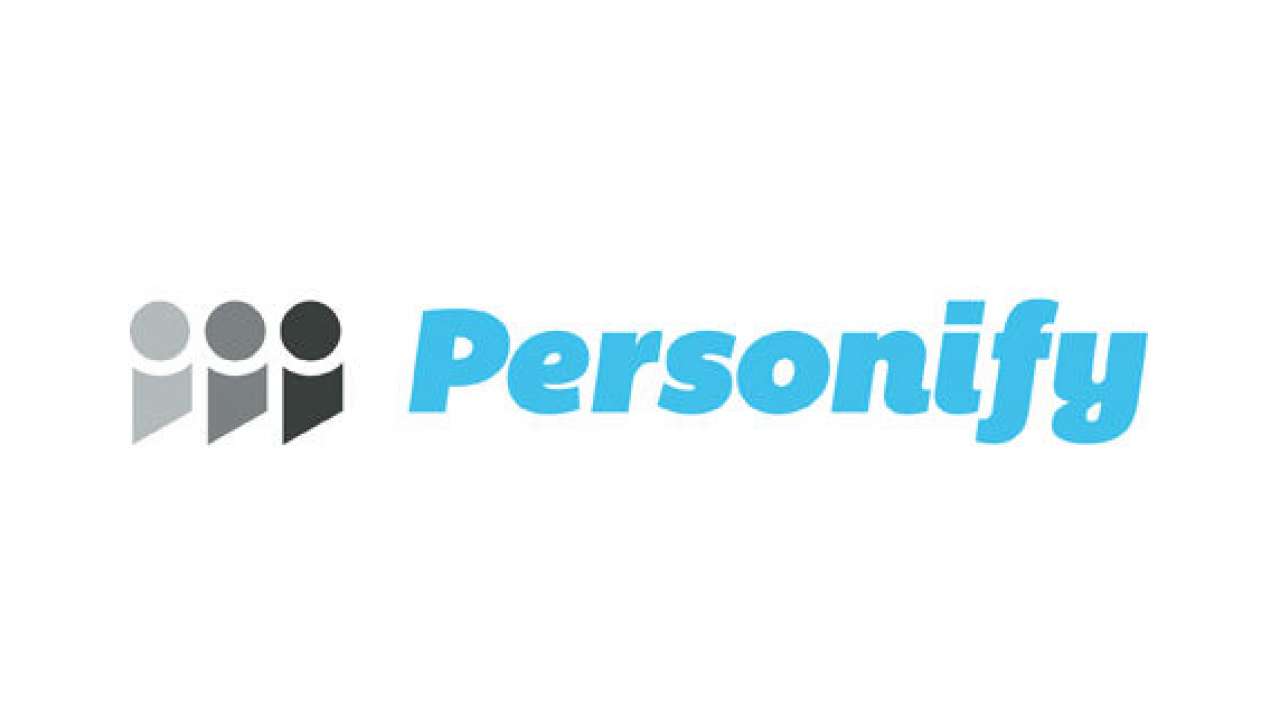With Personify, you become part of the presentation

Steve Jobs taught us that a slideshow presentation alone cannot captivate an audience — you need that really engaging speaker, too. That’s a tall order when conducting a presentation online, though. This problem is one that Personify, a Web presentation and collaboration tool, hopes to solve. Instead of simply talking over a presentation, you can become part of it and, hopefully, keep your audience interested.
Personify uses a depth camera — either a Kinect camera or an ASUS XTION Pro – to capture the presenter on live video. Software filters then go to work, separating the presenter from his or her background and then clearing that background out entirely. In my demo with Personify, Inc. CEO Sanjay Patel, I started out seeing only Mr. Patel standing in front of his slideshow as though he was in front of a wall.
For those who’ve ever seen a weatherman do his job, it’s a lot like the presenter is standing in front of a green screen. But the depth camera and the software work together to make a green screen totally unnecessary. The camera takes in what’s in front of it and the Personify sofware works to distinguish what is and isn’t a human being, so wearing green won’t turn you into Rayman.
I went into the demo expecting some glitches here and there — perhaps some artifacts of the background peeking in from time to time, or even Mr. Patel’s chair making an appearance — but Personify worked nearly flawlessly. There’s an option the presenter can use to turn off the filtering and, when Mr. Patel did so, I was honestly shocked at how much work the software was doing to make everything else in his office invisible. Whiteboards, wall ornaments, etc. — all were there in the background, but using the depth camera, Personify stripped them out.
The experience isn’t totally perfect, though — at least, not when you are the one who wants to do the presenting. It isn’t the setup of the actual presentation so much as everything that comes before it that’ll cause you grief. The camera I was sent for demo purposes, the ASUS XTION Pro, came with no software of its own and Windows did not recognize it automatically. I had to visit the ASUS website to download the appropriate drivers. I then had to install the Personify software (obviously), but as soon as I got near the end of the tunnel, I had to install the Microsoft .NET framework, which added another 15-20 minutes to the process.
If I was getting everything ready to go 30-45 minutes before my presentation was scheduled, it would have started late.
From there, though, presenting is pretty straightforward and the software pulls off some pretty neat tricks. If you want to use your keyboard and mouse to navigate through your presentation. Personify will automatically fade you out of the picture when you come in close to the camera. And if you’d rather forego the keyboard and mouse navigation, there are some motion gestures that allow you to move back and forth. There’s a mobile app, too. Using that, you can both navigate through your slideshow and also use a button to “disappear” from the screen.
It’s all very neat stuff, and I’d be surprised if Personify’s investors — who poured $1.5 million into the company last year — weren’t imagining other uses for that technology.
Personify currently offers three pricing plans: $19.99 a month, $199 a year, and a special camera bundle that packs in an ASUS XTION Pro and 3 months of service for $199. And, according to Mr. Patel, the company plans on adding features in the future that should make Personify a more well-rounded collaboration tool. One such feature mentioned was a way to share and transfer files, a feature I’m sure many presenters would like.
Personify might be overkill for those who meet online sparingly and only spend a few minutes catching up. But for those who spend a lot of time delivering webinars, Personify comes closer to emulating the in-person presentation experience than any app I’ve seen so far. The technology is impressive and the service price is reasonable. The cost of a depth camera seems like the biggest barrier to entry, but you can get the XTION Pro on NewEgg for $119 or a Kinect from Walmart for under $100, so it’s not a super-expensive investment.
If it keeps your audience from dozing off, it might even pay for itself.